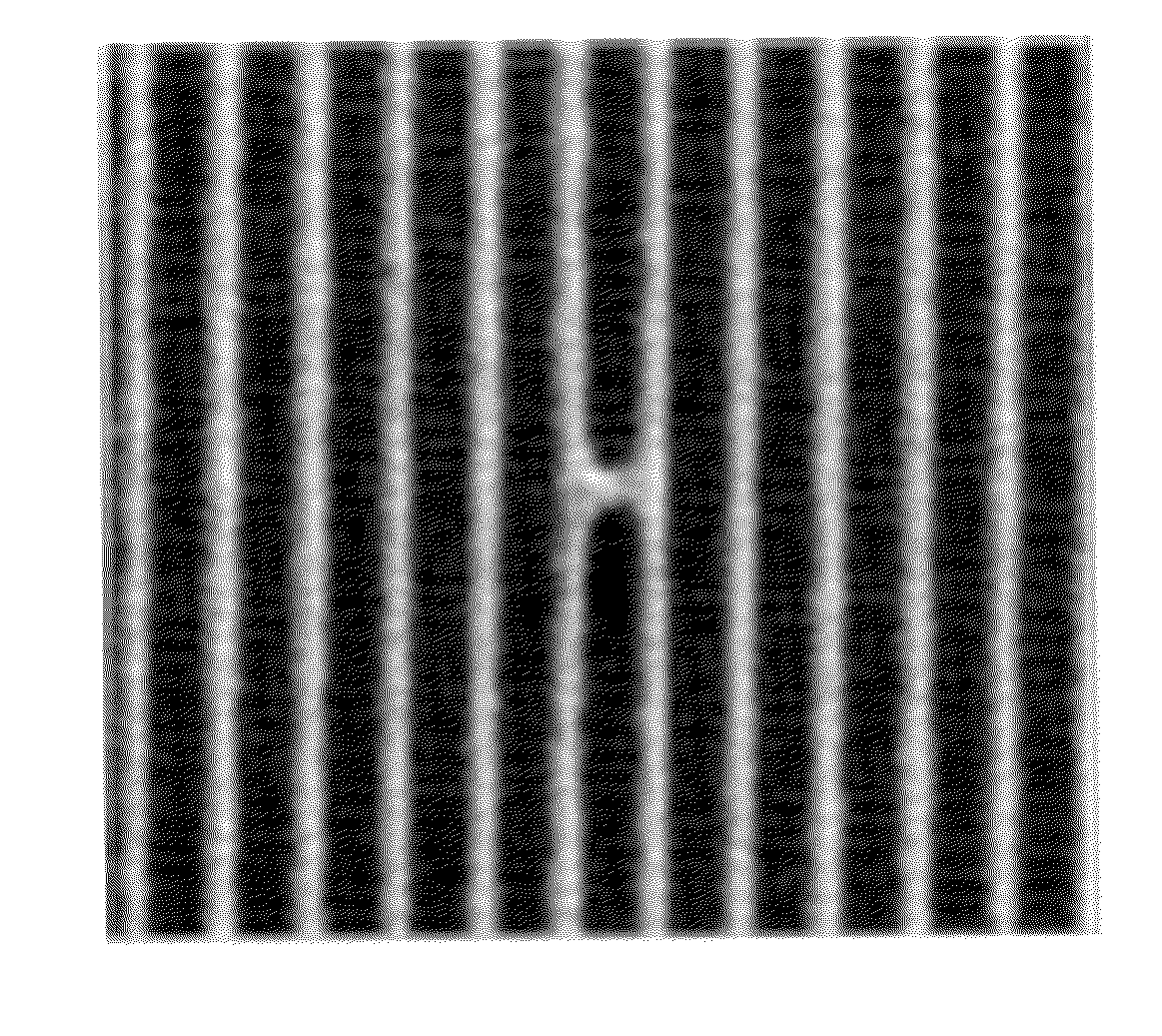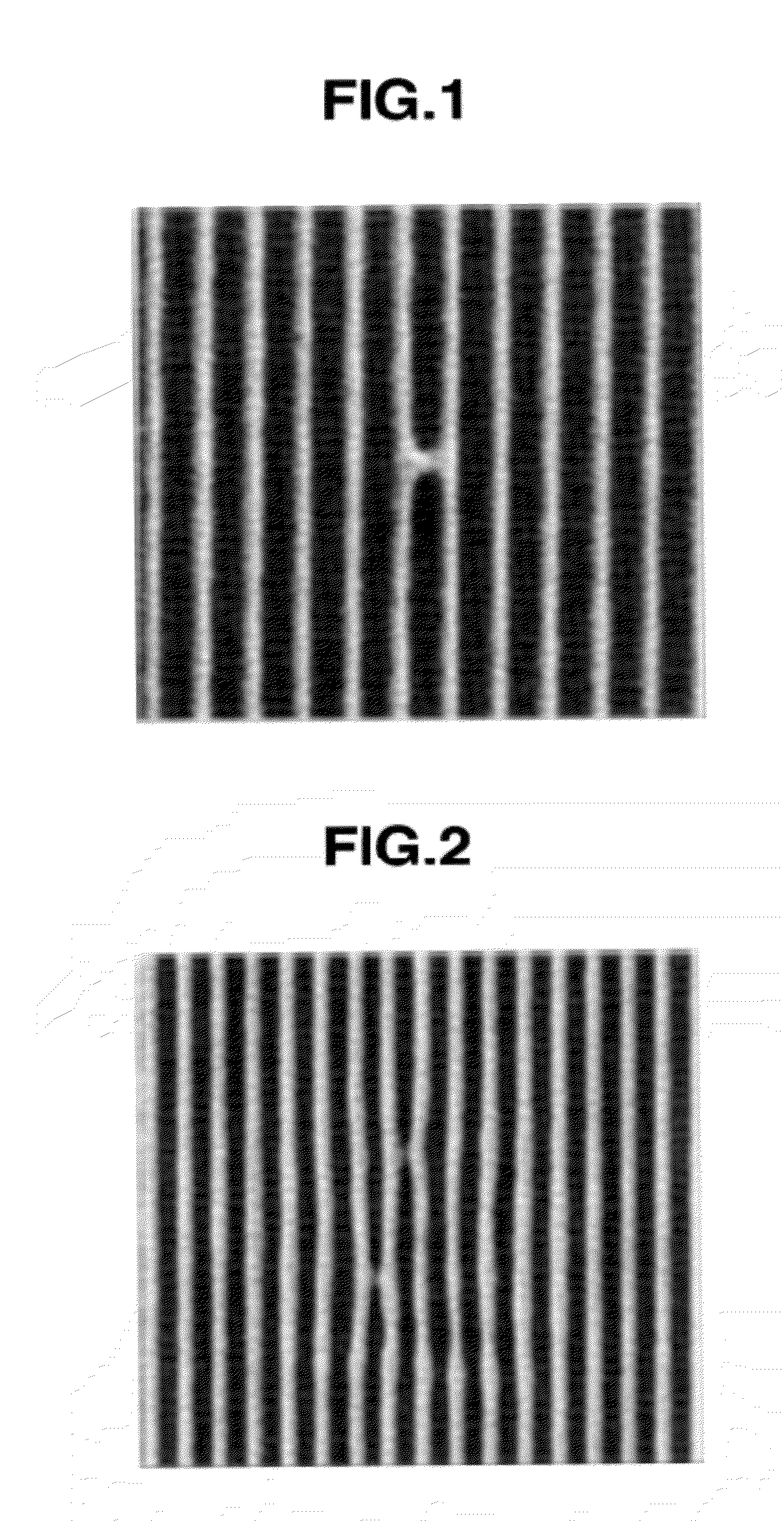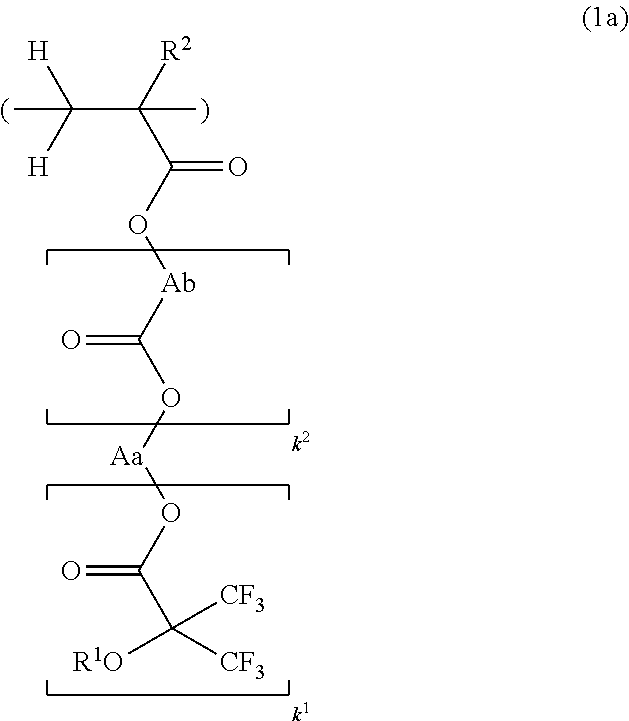Resist composition and patterning process
a composition and patterning technology, applied in the field of resist composition, can solve the problems of pattern profile change, resist performance, and postponement of fsub>2 /sub>lithography, and achieve the effect of minimizing any change of pattern profile, reducing the cost of protective film formation, and sufficient barrier performance against water
- Summary
- Abstract
- Description
- Claims
- Application Information
AI Technical Summary
Benefits of technology
Problems solved by technology
Method used
Image
Examples
synthesis example 1-1
Synthesis of Polymer 1
[0149]In a nitrogen atmosphere, a flask was charged with 15.0 g of ethylene glycol methacrylate [3,3,3-trifluoro-2-hydroxy-2-(trifluoromethyl)propionate], 0.53 g of dimethyl 2,2′-azobis(isobutyrate), and 15.0 g of methyl ethyl ketone to form a monomer solution at a temperature of 20-25° C. In a nitrogen atmosphere, another flask was charged with 7.50 g of methyl ethyl ketone, which was heated at 80° C. with stirring. The monomer solution was added dropwise thereto over 4 hours. After the completion of dropwise addition, the polymerization solution was stirred for a further 2 hours while maintaining the temperature of 80° C. At the end of maturing, the solution was cooled to room temperature. The polymerization solution was transferred to an eggplant-shape flask and concentrated using an evaporator. Then toluene was added to the flask so as to eventually form a 40 wt % solution of toluene / methyl ethyl ketone (mix ratio 9 / 1). The solution was added dropwise to 15...
synthesis examples 1-2 to 1-22
and Comparative Synthesis Examples 1-1 to 1-3
Synthesis of Polymers 2 to 22 and Comparative Polymers 1 to 3
[0150]Polymers 2 to 22 and Comparative Polymers 1 to 3 were synthesized as in Synthesis Example 1-1 aside from changing the amount and type of monomers. It is noted that the values of c, d, e and f are molar ratios of monomer units.
Preparation of Resist
examples 1-1 to 1-30
and Comparative Examples 1-1 to 1-4
[0151]A resist solution was prepared by combining an additive polymer (Polymers 1 to 22 and Comparative Polymers 1 to 3), a base resin (Resist Polymers 1 and 2), an acid generator, a basic compound, and a solvent in accordance with the formulation shown in Table 1, mixing and dissolving the components, and filtering through a Teflon® filter having a pore size of 0.2 μm. The solvent contained 0.01 wt % of a surfactant KH-20 (Asahi Chemical Industry Co., Ltd.). In this way, inventive resist compositions R-01 to R-30 and comparative resist compositions R-31 to R-34 were obtained.
TABLE 1AdditivepolymerBase resinPAGBaseSolvent 1Solvent 2Resist(pbw)(pbw)(pbw)(pbw)(pbw)(pbw)Example1-1R-01Polymer 1Resist Polymer 1PAG1Base1PGMEACyHO(5.0)(80)(15.0)(4.0)(2,700)(300)1-2R-02Polymer 2Resist Polymer 1PAG1Base1PGMEACyHO(5.0)(80)(15.0)(4.0)(2,700)(300)1-3R-03Polymer 3Resist Polymer 1PAG1Base1PGMEACyHO(5.0)(80)(15.0)(4.0)(2,700)(300)1-4R-04Polymer 4Resist Polymer 1P...
PUM
| Property | Measurement | Unit |
|---|---|---|
| wavelength | aaaaa | aaaaa |
| size | aaaaa | aaaaa |
| refractive index | aaaaa | aaaaa |
Abstract
Description
Claims
Application Information
 Login to View More
Login to View More - R&D
- Intellectual Property
- Life Sciences
- Materials
- Tech Scout
- Unparalleled Data Quality
- Higher Quality Content
- 60% Fewer Hallucinations
Browse by: Latest US Patents, China's latest patents, Technical Efficacy Thesaurus, Application Domain, Technology Topic, Popular Technical Reports.
© 2025 PatSnap. All rights reserved.Legal|Privacy policy|Modern Slavery Act Transparency Statement|Sitemap|About US| Contact US: help@patsnap.com



